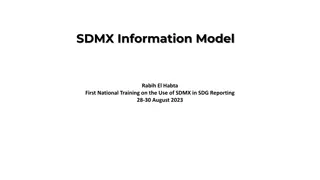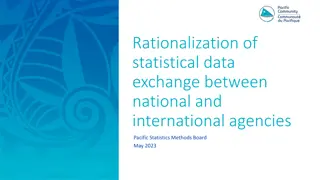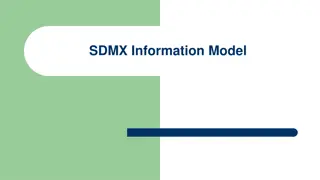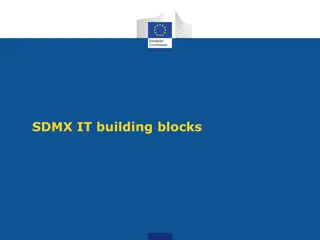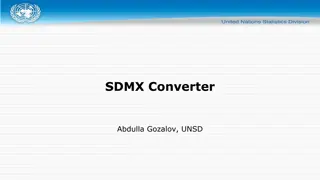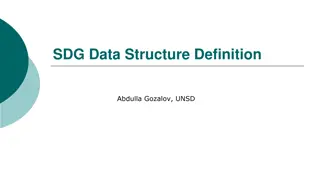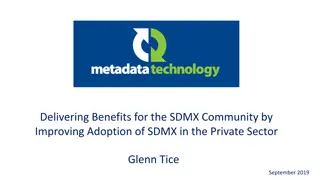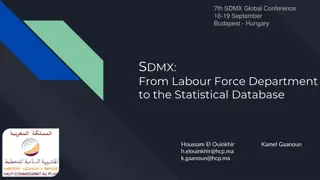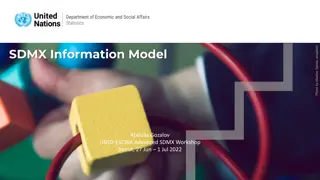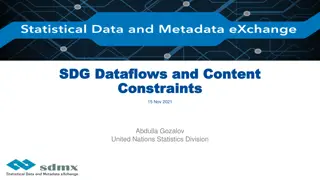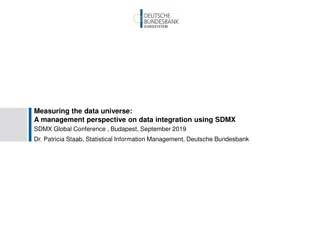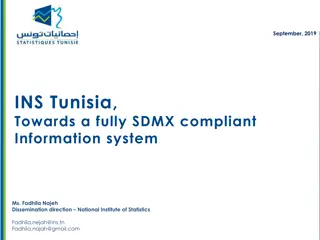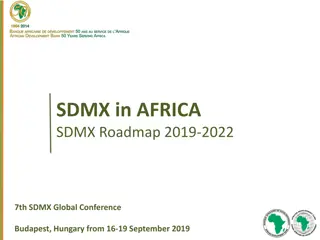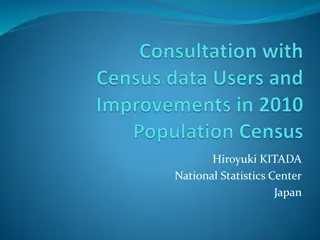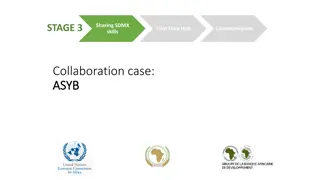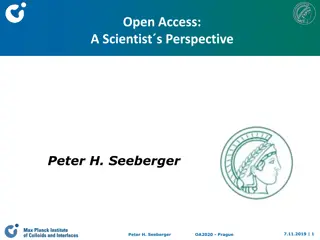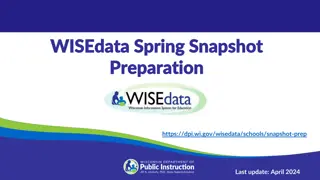Overview of SDMX Scenarios for Data Reporting and Dissemination
SDMX, designed for standardizing data exchange, offers versatile use in processing, validation, dissemination, and data management. Various scenarios like mapping data files to DSD, converting databases to SDMX, and using tools like ILO SMART demonstrate the scalability and efficiency of SDMX application in reporting and dissemination processes.
Download Presentation

Please find below an Image/Link to download the presentation.
The content on the website is provided AS IS for your information and personal use only. It may not be sold, licensed, or shared on other websites without obtaining consent from the author. Download presentation by click this link. If you encounter any issues during the download, it is possible that the publisher has removed the file from their server.
E N D
Presentation Transcript
Photo by Markus Spiske, unsplash SDMX Scenarios: Overview 7th Regional Workshop on Data and Metadata Exchange for Reporting on SDGs Egypt, Cairo 3 5 June 2024 Abdulla Gozalov United Nations Statistics Division
Objectives of SDMX SDMX was originally designed to standardize data and metadata exchange between and among international organizations and member countries. However, the power and utility of its underlying information model has increasingly broadened the scope of use of SDMX in addition to data/metadata exchange Processing Validation Dissemination Data and metadata management Statistics Division 2
Scenarios for SDMX Reporting and Dissemination Thanks to the availability of a large number of powerful tools that rely on a common Information Model, application of SDMX is fully scalable and can be adapted to many environments. Some commonly used tools, such as SDMX Converter, can be used with very limited infrastructure in place. In more sophisticated environments, however, other tools and platforms are even more efficient in the automation of business processes, further reducing the effort required to establish automated data reporting, dissemination, and other processes. We will now look at some of the common scenarios of the application of SDMX for reporting and dissemination. Statistics Division 3
Scenario: no database to SDMX SDMX data Map data files to a DSD Once mapped, use a tool such as SDMX Converter to transform the files to SDMX datasets No software development! Most effort goes to mapping data files to the DSD Can vary from very simple to very complex Can be used with Eurostat s SDMX Converter, ILO SMART, and other tools. We have extensively covered this scenario at previous training events. Statistics Division 4
Scenario: relational database to SDMX SDMX Web Service/API SDMX mappings Use software such as SDMX Reference Infrastructure to map a statistical database to the DSD Once mapped, the data is available at the SDMX API No software development! Most effort goes to mapping the database to the DSD This is the scenario will be working on at this workshop. Statistics Division 5
Scenario: micro-data to SDMX ILO SMART SDMX The ILO SMART tool enables the user to define aggregation operations on micro-data sets, map the aggregates to codes and concepts of a DSD, and convert the data to SDMX No software development Most effort goes to defining aggregation and mapping Statistics Division 6
Scenario: Native SDMX data warehouse In this scenario, reporting or dissemination is fully based on SDMX. SDMX datasets can be automatically loaded into a database created on the basis of SDMX DSDs and other structural metadata. .Stat Data Lifecycle Manager (part of the .Stat suite), ISTAT Data Manager (part of the ISTAT Toolkit), and Regnology Fusion Statistics (formerly Fusion Registry Enterprise)are some of the tools that implement this paradigm. Data loaded to the database are automatically available at an SDMX API. Statistics Division 7
What then? Once converted to SDMX, a variety of platforms can be used to disseminate and visualize the data SDMX Web Service/API Statistics Division 8
Designing data life cycle These scenarios are not an exhaustive list. Many others are possible, and these scenarios themselves can be combined or modified. When developing systems architecture, factors such as available infrastructure, skills, and overall development strategy should be considered to design an architecture most appropriate to a statistical office. To achieve highest business process efficiency while improving data quality, timeliness, availability, and usability. Statistics Division 9
THANK YOU! Statistics Division 10


